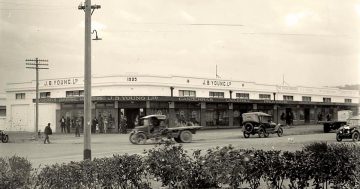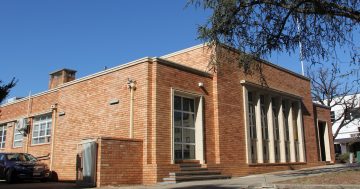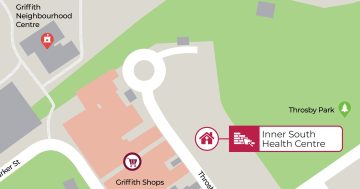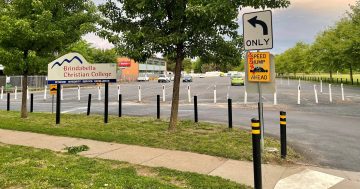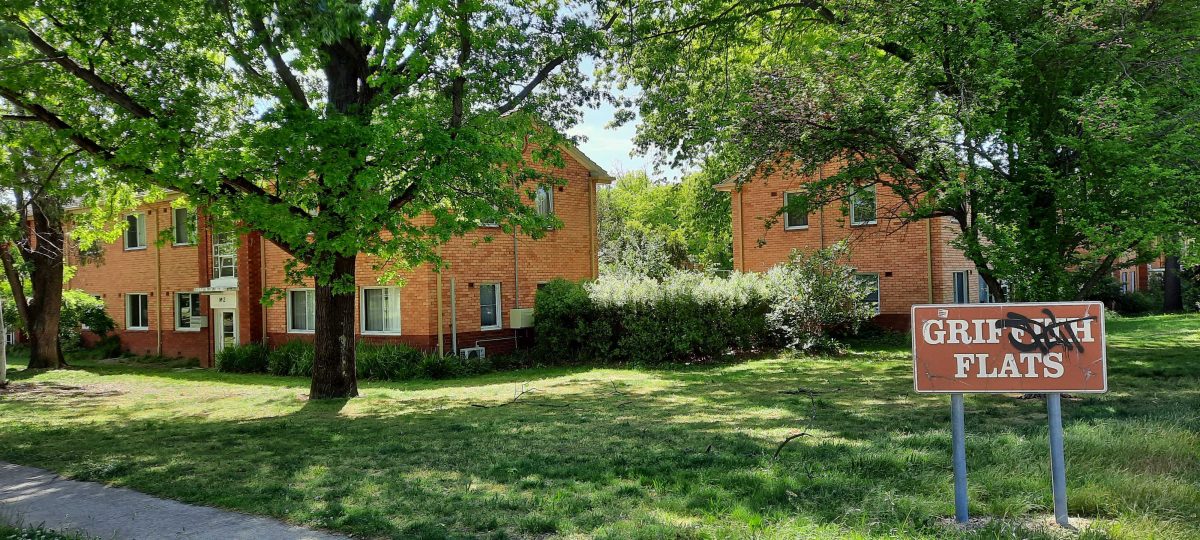
The Griffith Flats represent a well-preserved example of Canberra’s medium-density government housing designed for public servants. Photo: Ian Bushnell
The 75-year-old Griffith Flats have been given provisional listing on the ACT Heritage Register.
Occupying a prime site on Canberra Avenue (Block 1, Section 21, Griffith), the flats represent a well-preserved example of Canberra’s medium-density government housing designed for public servants and contribute to the understanding and appreciation of the broad pattern and evolution of the ACT’s history and heritage, according to the Statement of Heritage Significance.
Griffith Flats remain part of the ACT Government’s public housing stock and consist of eight brick freestanding buildings set around a central open space.
The Garden City planning, the buildings’ relationship to the central open space, their relationship to one another and the broader relationship to the landscape setting are considered significant attributes.
If confirmed, heritage listing would preserve the complex and prevent it from going the way of Stuart Flats on the other side of Canberra Avenue, which were demolished and replaced by apartments and townhouses.
Kingston Barton Residents Group committee member Nick Swain, who co-authored the nomination, said the Griffith Flats were the first integrated complex of government flats built in the ACT.
Until 1948, nothing of that size had been built in the ACT.
He said there was a new wave of public servants from Melbourne, a massive shortage of housing and, at the same time, a massive shortage of building materials.
“The best way you could build a lot of places to live with a small amount of building materials was to build flats,” he said.
Mr Swain said they also housed embassy and church staff, as well as public servants.
He was unaware of anything in the development pipeline for that site and could not see what would stop it from being officially listed.
“We think we put a pretty strong case,” Mr Swain said.
Griffith Narrabundah Residents Association president David Denham welcomed the provisional listing, saying the complex was well-designed and functional.
“That’s one of the successful public housing developments in the Inner South,” he said.
“It’s a good thing because it’s functional now and it performs a useful contribution to life, and they look good. It’s a reasonable proposal.”
The heritage statement says the development of the Griffith Flats arose from the Federal Government’s urgent need to provide permanent housing for the planned post-war influx of public servants into Canberra.
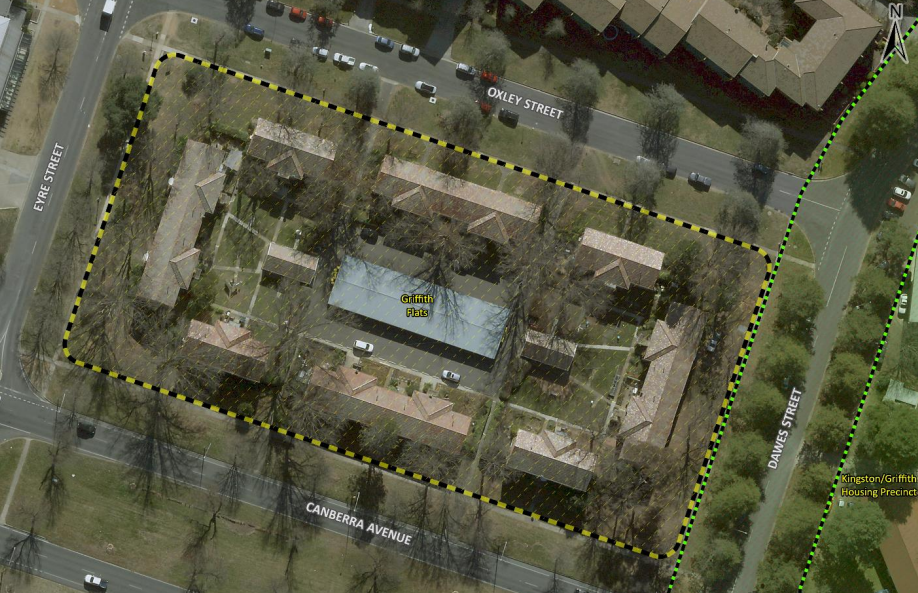
An aerial view of the Griffith Flats: it is in remarkably intact condition. Photo: ACT Heritage Council.
They were the first to be built under the government’s community flats project, stemming from the National Capital Planning and Development Commission’s (NCPDC) seven-year development plan for Canberra.
“The Griffith Flats also illustrate the Federal Government’s response to the post-war scarcity of building materials,” it says.
“The complex was the first of only four such developments in the post-war era and it is in remarkably intact condition.”
“The architecture is appropriate to its designed function and clearly of the immediate post-war period, exhibiting elements of the Inter-war Georgian Revival Style.”
It met two of the ACT Heritage Council criteria – importance to the course or pattern of the ACT’s cultural or natural history and importance in demonstrating the principal characteristics of a class of cultural or natural places or objects.
The Heritage Council says the Griffith Flats reflect a way of life unique to Canberra when public servants initially stayed at a government hostel and then occupied a government flat while waiting for a government house to be allocated.
They have a clear association with the post-war housing efforts of the National Capital Planning and Development Commission (NCPDC), and despite changes in the function of the housing, there is a long association with the original purpose and continuity in the broader context as government provisioned housing, it says.
“The Griffith Flats are a seminal example of the class of place that set the standard for later designs, particularly Ainslie Flats and Braddon and Reid Courts,” the council says.
Comments can be submitted to the council or on the YourSay website during the four-week consultation period.
The provisional registration period lasts until 10 March 2024.












